Frost, Nancy Agati and Amie Potsic at The Schuylkill Center for Environmental Education, Nancy Agati, Frosted, red twig dogwood branches, wood, glue, 26’x26’x18″ variable, 2013 and Amie Potsic, Endangered Seasons – Winter, a site-specific installation involving silk imprinted with imagery from the forest canopy and Made in China, photography.
Frost, Nancy Agati and Amie Potsic at The Schuylkill Center for Environmental Education
“The Schuylkill Center for Environmental Education inspires meaningful connections between people and nature. We use our forests and fields as a living laboratory to foster appreciation, deepen understanding, and encourage stewardship of the environment. Founded in 1965, The Schuylkill Center for Environmental Education is one of the first urban environmental education centers in the country. Envisioning an “island of green” where city dwellers could experience and learn about the natural world, sisters Eleanor Houston Smith and Margaret Houston Meigs, along with their families, donated the extensive parcels of farmland and woods that make up the Center’s grounds today. As our founders intended, the Center is used by thousands of people each year to discover, explore, and study nature.” – The Schuylkill Center for Environmental Education website
Frost, Nancy Agati and Amie Potsic at The Schuylkill Center for Environmental Education, Spiral Antics, grass and reeds
Frost is an art show which explores the Winter natural environment through art, science and thought. The artists, Nancy Agati and Amie Potsic, created a symbiotic installation of works at The Schuylkill Center for Environmental Education that represent the cold bleak Winter and the magical resilience of the environment to retain it’s beauty and mystery. Nancy Agati collected twigs, reeds and grasses, the left over dregs of Summer and Fall, to create wondrous sculptures hanging from the ceiling or mounted on the walls while Amie Potsic explored the metaphysical and sociological impacts of the cold Winter forest canopy. The installation transports the visitor to a season of frigidity and silence that must be endured to finally burst free into the bright colors of Spring.
Nancy Agati came to Philadelphia from upstate New York and now teaches art in Philadelphia after receiving her Masters degree from the University of the Arts. Both artists described their artwork to the folks gathered at the opening of Frost on March 1st:
Nancy Agati said, “I will say that, yes, this has been quite the Winter and we had no idea when we got the call about the show that we would be quite the Winter of my memories. Because I grew up in upstate New York, so, this is much like that. I began this work thinking about the decorative traditions that is established with the onset of the Winter season: trees. lights and ornaments. I had conversations about memories of the artificial Christmas trees, the color coded branches that fit so perfectly into pre-drilled trunks. I thought about tinsel and plastic. Then, I opted for Nature: twigs, vines and reeds.”
Frost, Nancy Agati at The Schuylkill Center for Environmental Education
“In collecting the natural materials for the work, I saw color that remained shimmering on gray days. I observed the geometry and orderliness of the growth patterns and the disorderliness of the fallen grasses under mounds and mounds of snow. Stretches of branches against the Winter sky read as line drawings with the complexity of seemingly simple spirals and lines.”
Frost, Nancy Agati at The Schuylkill Center for Environmental Education
“I designed systems to follow the pattern of the materials, trying to push a perceived order realizing that later Nature would lead the way. This has been and continues to be an extraordinary Winter, the falling snowflakes out my studio window were like gifts.” – Nancy Agati
Frost, Nancy Agati at The Schuylkill Center for Environmental Education
I asked Nancy Agati about the process of making her artwork.
“As much as I wanted to go out into the wilderness and collect things, I actually collected all this stuff at work except for some that is from my yard. I have a curly willow tree in my yard that I make stuff from all the time. I work at the Haverford School, I went to the maintenance department and I asked if they minded if I trimmed the bushes and the reeds. And they were like, ‘No, do it!’ So that’s where all this stuff came from.”
How do you put it all together?
“That’s why I mentioned the artificial Christmas tree, I drilled the holes and then followed the pattern and glued them in with regular white glue. At first, I thought i could do a piece that you could take all the pieces out but after going even half way around the spiral I realized if I didn’t glue them in it was all going to fall out.Some of the holes have reed and other holes have grass and some have grass and reed. I just follow the spirals and it works the same with the vine where it’s randomly placed. I drew a circle and then tried to keep the edge of the branches within that circle.”
Frost, Nancy Agati at The Schuylkill Center for Environmental Education, Radiate. curly willow.
Amie Potsic is a photographer and installation artist in the Philadelphia area and is the Director of the Main Line Arts Center and the Chair of the artistic advisory board for Art in City Hall program for the city of Philadelphia.
“I’ll talk about the Made in China work first. Thank you so much to The Schuylkill Center for Environmental Education, I absolutely love being here when it’s in full bloom, please come back if you haven’t been when in the Summer time it’s wonderful to walk through the trails. There is incredible art throughout, it’s just a really inspiring place, so, I’m thrilled to be here. I’ve actually curated a couple of shows here in the past, so, I’m really excited to show my own work here. Thank you very much for having me.
In my work, I’ve been inspired by trees and Nature for a long time. Trees have always been my talisman, even when I was young. But I really didn’t do any artwork about them until the last few years. I moved back from the West coast, I was in San Francisco for almost ten years where there are essentially no seasons, it’s either wt or dry. I desperately missed the seasons, I felt there was something missing not having those natural cycles. So, when I moved back here in 2005, I just totally found myself romanced by the seasons and carried my camera with me every day and took pictures every day. The beauty of it is like when I’m traveling. I’ve done a lot of documentary work of artwork and have that every day exciting discovery of when everything is new and fresh and you’re paying attention all the time.”
Frost, Amie Potsic at The Schuylkill Center for Environmental Education, Endangered Seasons, photography on silk
“The beautiful thing with this body of work was I had that experience at home. I had my camera every day to see how things were changing. The light is perfect right now! You have to take the picture right now! Trees are everywhere. It was really, really fun to be able to have that experience of photographing at home and not be traveling. When I was photographing trees throughout the seasons I started to see what my work revealed to me was that as I started looking at the photographs they started looking more and more like Asian prints, like Chinese prints, like Japanese prints that I had been influenced by over the years. I wasn’t necessarily intending them to be that but they were revealing themselves to be that. I started to follow the lead of my work. I had a teacher in grad school who said, ‘Your work is always smarter than you are, so, follow your work. Not where you think it should go, follow where it’s going.’ I’ve always tried to live by that and follow where it’s going and respond to what I see.
I started working with the seasons and at the same time I saw a protest in Rittenhouse Square of a group that was protesting Falun Gong and I learned how the practitioners of Falun Gong were being captured and tortured. Falun Gong is essentially a religion that is essentially Buddhism, it’s a meditative practice outlawed in China and if you’re caught doing it you’re thrown in jail and tortured. It’s a real nightmare. When I saw this demonstration it was extremely graphic. And this happened I was seeing my photographs revealing this Asian influence, so, the two ideas came together. I started thinking about the past in China, the past and history of the art there is so incredibly impressive and influential to me yet the modern reality there is in conflict with it, their social and political issues are really contentious. My work started to take on those issues and that’s why each piece has Chinese calligraphy and the English translation with a Chinese stamp. There are four panels for each season, this is the Winter section.”
Frost, Nancy Agati and Amie Potsic at The Schuylkill Center for Environmental Education
“For Endangered Seasons, I was always painting and manipulating my photographs, so it was really interesting when I found I could print my photographs of tree work that looks different but is still looking up in the canopy. Printing that on fabric, on silk, and making a three dimensional installation where you feel like you’re walking in the forest. The idea is you are walking in the canopy, this is just the Winter season from a series that is all four seasons.
These are four feet wide by fifty feet long pieces of silk that I print a continuous image on and then create the installation from one continuous piece. The idea is to generate that feeling you have when you’re in the canopy, in the forest, looking up, seeing the sun come through the trees and having that enveloping experience. Why is it called Endangered Seasons? Because just like endangered species, our climate changes are a serious issue now. If you think about our seasons being endangered, perhaps, we would protect them the way we try to protect endangered species.”
Like The Schuylkill Center for Environmental Education of facebook
Written and photographed by DoN Brewer except where noted.
Follow the original DoNArTNeWs Philadelphia Art News Blog at www.brewermultimedia.com
Like DoNArTNeWs Philadelphia Art News Blog on facebook
Follow DoN on Twitter @DoNNieBeat58
DoNArTNeWS on Tumblr
@donniebeat on Instagram
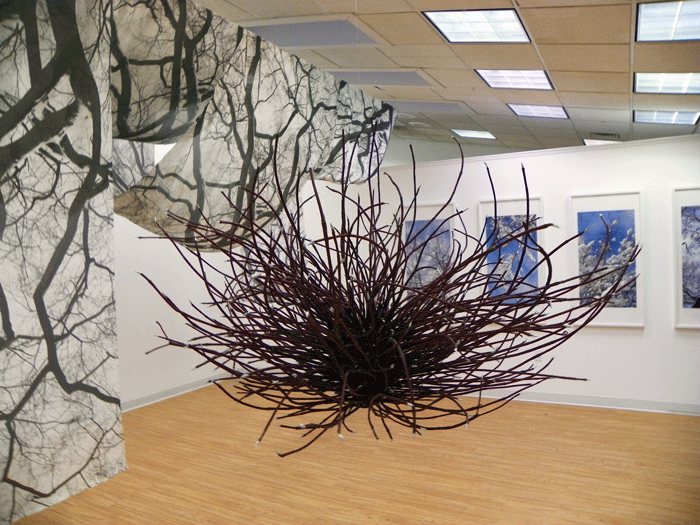
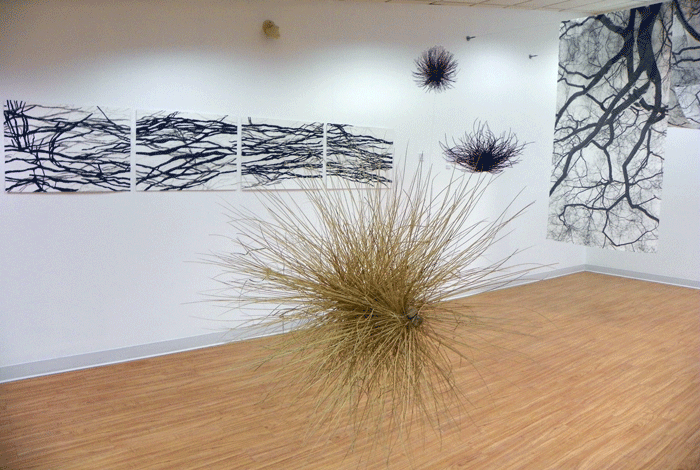
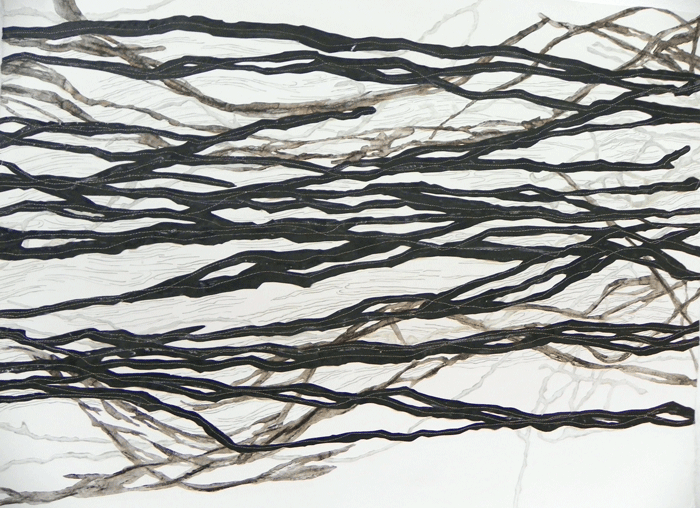
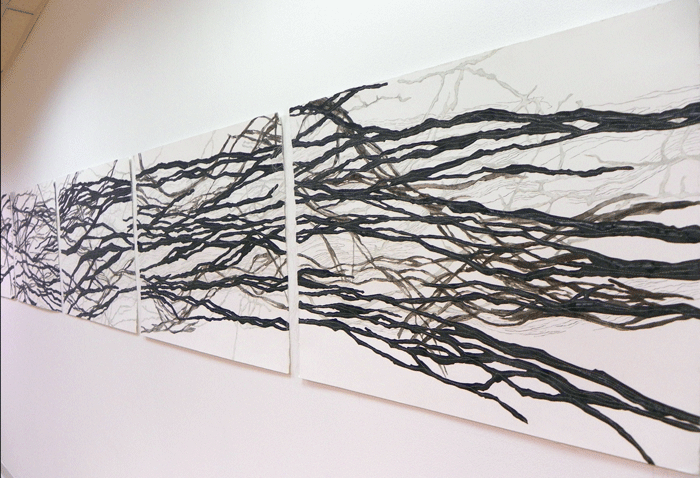
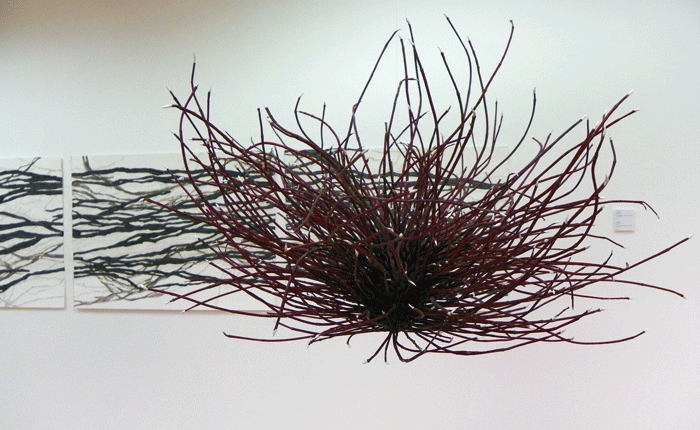
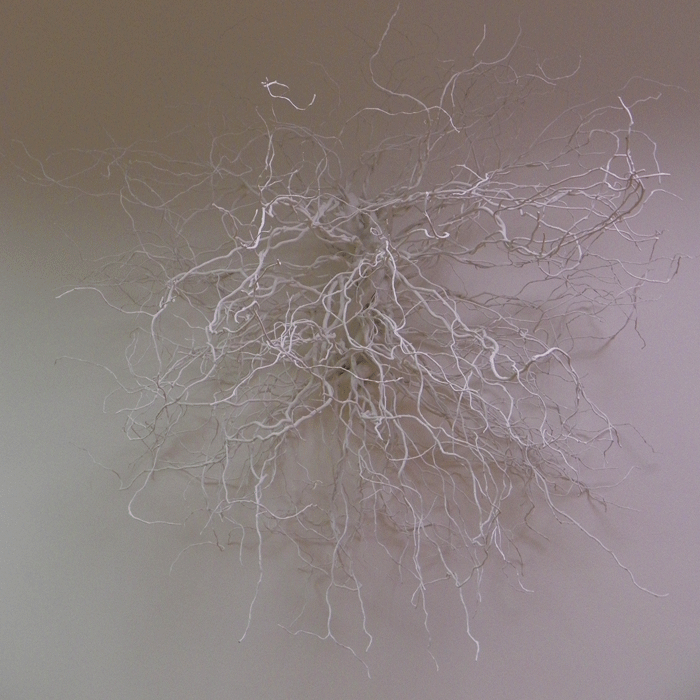
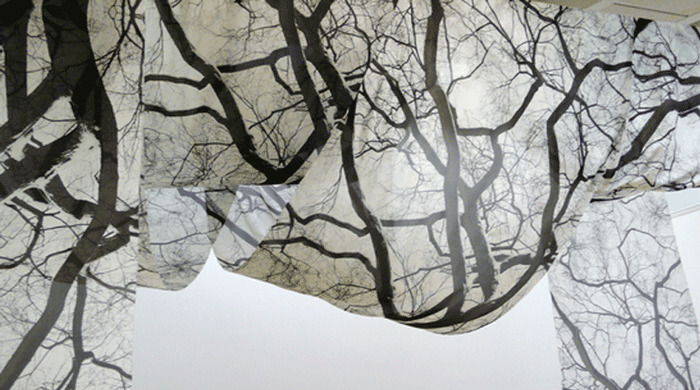
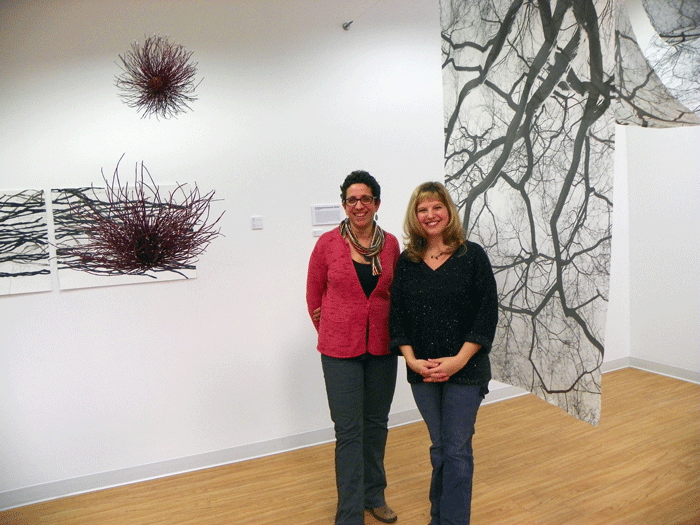



{ 0 comments… add one now }
You must log in to post a comment.